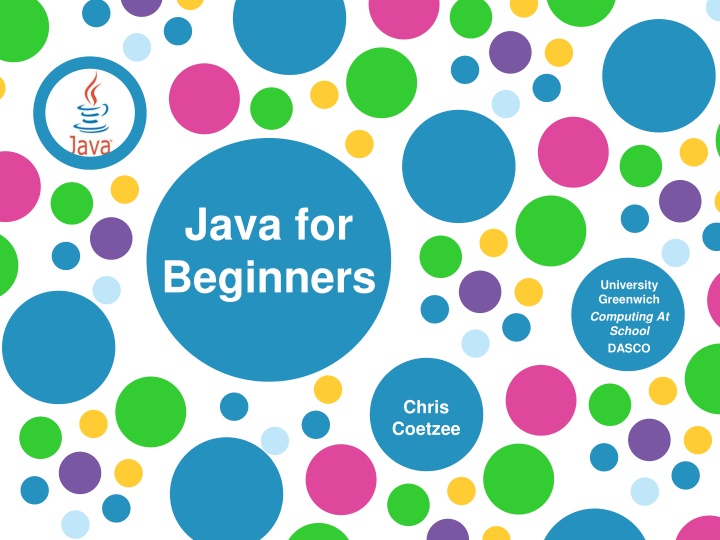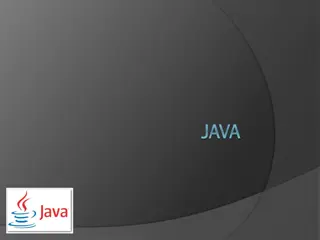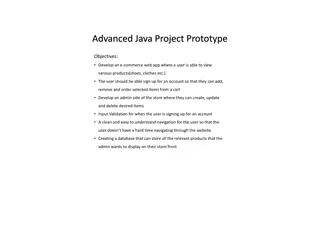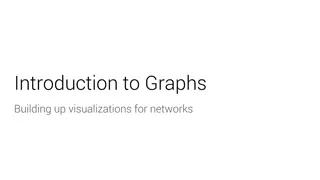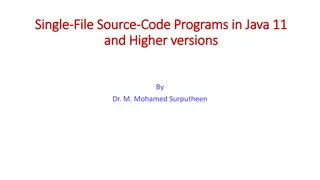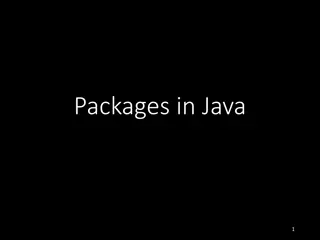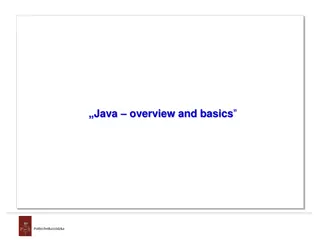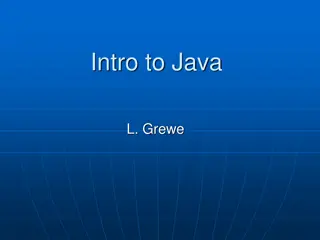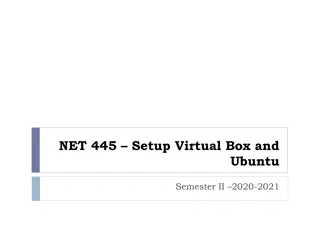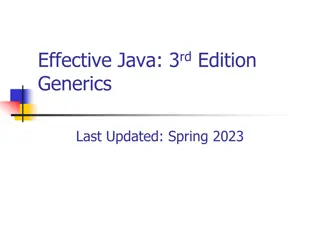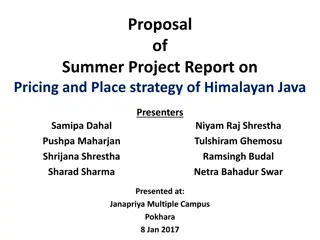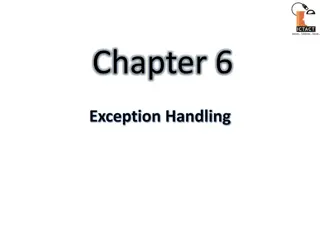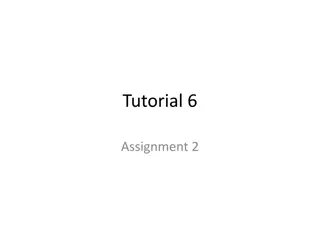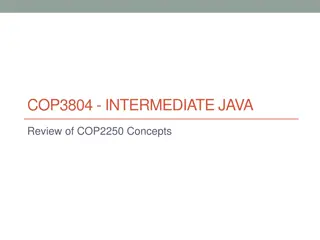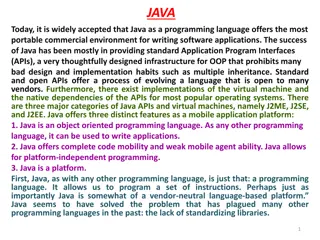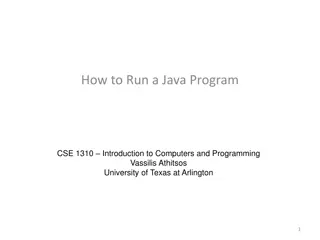Java for Beginners at University: Getting Started with JDK and IDE
Learn the essentials for Java programming with JDK (Java Development Kit) and IDE (Integrated Development Environment). Discover the syntax rules, Java's structure, coding levels, and more. Explore the laws of Java, class examples, and how IDEs streamline the coding process. Dive into syntax, laws, variables, output, object-oriented concepts, and graphical user interface elements to master Java development. Start your coding journey with free tools like Eclipse, BlueJ, and NetBeans.
Uploaded on Mar 01, 2025 | 2 Views
Download Presentation

Please find below an Image/Link to download the presentation.
The content on the website is provided AS IS for your information and personal use only. It may not be sold, licensed, or shared on other websites without obtaining consent from the author.If you encounter any issues during the download, it is possible that the publisher has removed the file from their server.
You are allowed to download the files provided on this website for personal or commercial use, subject to the condition that they are used lawfully. All files are the property of their respective owners.
The content on the website is provided AS IS for your information and personal use only. It may not be sold, licensed, or shared on other websites without obtaining consent from the author.
E N D
Presentation Transcript
Java for Beginners University Greenwich Computing At School DASCO Chris Coetzee
What do I need for Java? JDK IDE Java! JDK (Java Development Kit) download from Oracle IDE (Integrated Development Environment) Many options: Eclipse (eclipse.org) PC and Mac version BlueJ (bluej.org) Netbeans (netbeans.org) ALL FREE!
3 Laws of Java 1. Every line ends with a ; unless the next symbol is a { 2. Every { has a } 3. Classes start with capital letters, methods and variables start with lower case letters
Syntax rules Classes start capital letters and have no ( ) Methods start lowercase letters and have a ( ) Variables always start with a lowercase letter = means gets the value of ==means equals when comparing numbers .equals() means equals when comparing words
Javas structure Java programs are called classes They exist inside a container called a project All classes have at least one method called main() Project: CheeseCake Class: CheeseCake Method: main() We write our code here
Java class example Class name Main method
Dont worry! The IDE (Eclipse) automatically makes all the gunk at the top public this, void main that http://recitpresco.qc.ca/sites/default/files/imagecache/grand/album/a-lecole/detente-recitpresco-nb.gif
Levels of coding Learning to program can be difficult if you don t learn things in the right order. Each level depends on a firm understanding of the previous level. It works!
Levels of Java coding 1: Syntax, laws, variables, output 2: Input, calculations, String manipulation 3: Selection (IF-ELSE) 4: Iteration/Loops (FOR/WHILE) 5: Complex algorithms 6: Arrays 7: File management 8: Methods 9: Objects and classes 10: Graphical user interface elements
